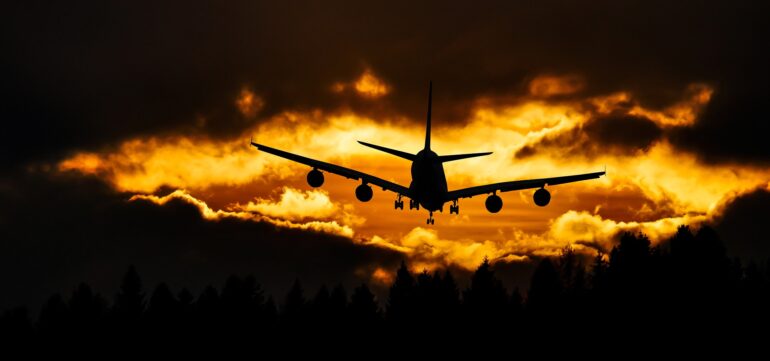TL;DR:
- MIT’s Air-Guardian system, developed by CSAIL, offers proactive copilot assistance for human pilots.
- It determines attention using eye-tracking for humans and “saliency maps” for the neural system.
- Air-Guardian identifies early signs of potential risks, enhancing safety.
- Its adaptability and dynamic features make it a unique addition to aviation technology.
- Field tests show improved flight safety and navigation success rates.
- The system’s foundational technology relies on visual attention and liquid neural networks.
- Future developments aim to refine the human-machine interface.
- Air-Guardian heralds a new era of safer skies through human-AI collaboration.
Main AI News:
In the dynamic world of aviation, safety is paramount, and the partnership between human pilots and cutting-edge technology has never been more critical. Imagine a scenario where you’re aboard an aircraft with two pilots: one human, the other a computer. Both are in control, but they prioritize different aspects of the flight. If the human pilot’s attention wanes or crucial details escape notice, the AI copilot, known as the Air-Guardian, swiftly steps in to ensure a safe journey. This transformative technology is the brainchild of researchers at the MIT Computer Science and Artificial Intelligence Laboratory (CSAIL).
The Air-Guardian system represents a proactive alliance between humans and machines, all rooted in a deep understanding of attention. But how does it gauge attention precisely? For humans, it employs eye-tracking technology, while for the neural system, it relies on “saliency maps” that pinpoint precisely where attention is directed. These maps provide visual cues, highlighting key regions within an image, which aids in decoding intricate algorithms. What sets the Air-Guardian apart is its ability to identify early signs of potential risks through these attention markers, a proactive approach that differs from traditional autopilot systems that only intervene during safety breaches.
The impact of the Air-Guardian transcends the realm of aviation. Similar cooperative control mechanisms could potentially find applications in cars, drones, and a broad spectrum of robotics. MIT CSAIL postdoc Lianhao Yin, a lead author on a recent paper about Air-Guardian, explains, “An exciting feature of our method is its differentiability. Our cooperative layer and the entire end-to-end process can be trained, and its adaptability is a unique aspect. The Air-Guardian system isn’t rigid; it can be adjusted based on the situation’s demands, ensuring a balanced partnership between human and machine.”
Field tests have demonstrated the effectiveness of Air-Guardian. Both the human pilot and the system made decisions based on the same raw images when navigating to the target waypoint. Air-Guardian’s success was measured by the cumulative rewards earned during the flight and the efficiency in reaching the destination. The system consistently reduced the risk level of flights and increased the success rate of navigating to target points.
Ramin Hasani, an MIT CSAIL research affiliate and the mind behind liquid neural networks, remarks, “This system represents the innovative approach of human-centric AI-enabled aviation. Our use of liquid neural networks provides a dynamic, adaptive approach, ensuring that the AI doesn’t merely replace human judgment but complements it, leading to enhanced safety and collaboration in the skies.“
At the heart of Air-Guardian’s capabilities lies its foundational technology—a collaborative layer that optimizes visual attention from both humans and machines, coupled with liquid closed-form continuous-time neural networks (CfC) known for their prowess in deciphering cause-and-effect relationships. To bolster its capabilities further, the system utilizes the VisualBackProp algorithm, which pinpoints the system’s focal points within an image, ensuring a clear understanding of its attention maps.
For the widespread adoption of Air-Guardian, refining the human-machine interface is crucial. User feedback suggests that an indicator, such as a visual bar, could be a more intuitive way to signify when the guardian system takes control.
In essence, Air-Guardian heralds a new era of safer skies, offering a reliable safety net for those moments when human attention may falter. Daniela Rus, the Andrew (1956) and Erna Viterbi Professor of Electrical Engineering and Computer Science at MIT and director of CSAIL, sums it up eloquently: “The Air-Guardian system highlights the synergy between human expertise and machine learning, furthering the objective of using machine learning to augment pilots in challenging scenarios and reduce operational errors.”
Stephanie Gil, assistant professor of computer science at Harvard University, adds, “This showcases a great example of how AI can be used to work with a human, lowering the barrier for achieving trust by using natural communication mechanisms between the human and the AI system.” The Air-Guardian is a testament to the power of collaboration between humans and technology, forging a path toward safer skies for all.
Conclusion:
MIT’s Air-Guardian represents a significant advancement in aviation safety. Its proactive approach to attention monitoring and adaptability can enhance collaboration between humans and AI in various industries beyond aviation. This technology has the potential to revolutionize safety standards and reduce operational errors in the market, making it a game-changer for the aviation and robotics sectors.

